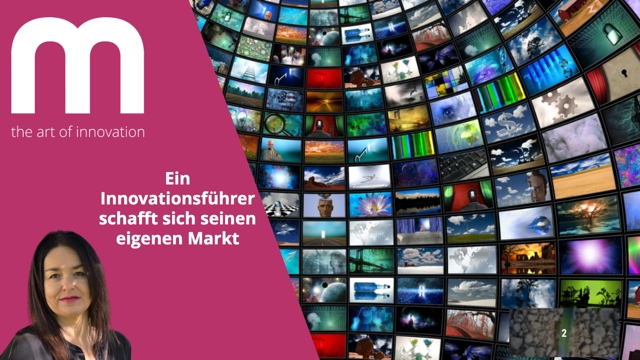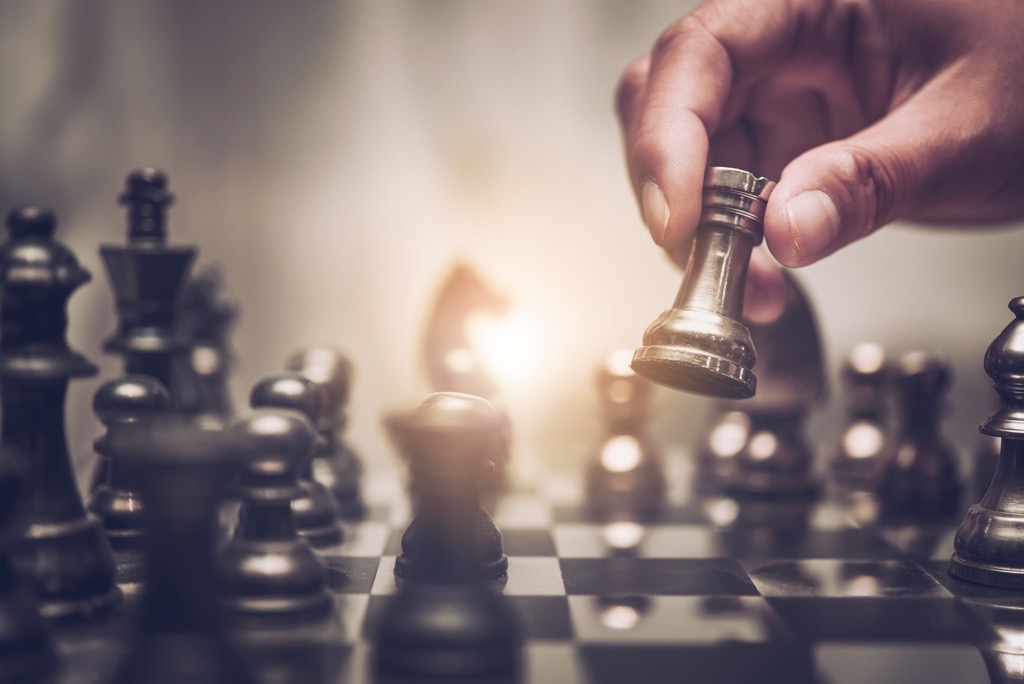-
Mar 15 2021 Medical Food – Does it make and keep us healthy?
What was once used exclusively to treat the seriously ill is now also aimed at healthy people: medical food. Dietary supplements and fortified foods for a healthy lifestyle?The sense and benefits are controversial – the use of artificial intelligence (AI) provides new answers and impulses for shaping individual lifestyle.
From Clinical Nutrition to Superfood
The term “medical food” comes from clinical nutritional medicine, which originally focused on the treatment of people with severe cardiovascular and metabolic diseases. Today, medical food stands for all activities and products that serve to maintain individual and collective health and prevent or inhibit the development of both mild and severe diseases.
Healthy or just good for business?
Health-related, physiologically compatible nutrition has been the subject of controversial discussions among scientists and the public since the late 19th century. In the meantime, bio certifications are just as much at odds with health, marketing and ethics as vegan diets or isotonic drinks for competitive athletes. Controversial, albeit widespread, are diets based on particular fruits and vegetables with the promise of sustainable well-being.
The link to clinical nutrition
New findings in nutritional science are constantly influencing not only the production and preparation of food, but also our eating habits. Canola oil, for example: Once a lubricant, it is now one of the most physiologically valuable edible oils thanks to its high content of omega-3 fatty acids. With similar values, salmon also contributes to lowering cholesterol levels. But when do we need fortified foods or dietary supplements? The latter are intended to cover a deficiency of trace elements or hormones, sometimes suspected, sometimes medically diagnosed, caused by acute or chronic metabolic disorders. This is the link to clinical nutrition.
The health navigator on your wrist
How do we recognize the effect of our diet? Thanks to AI, our “Smart Assistant” knows our physiological data, preferences, dislikes and allergies. Based on this data, it can show us how to alternatively meet our macro- and micronutrient needs. Together with data about our physical demands, it suggests menus tailored to our needs and also provides the shopping list for the ingredients missing from our “smart refrigerator. In the event of a calculated potassium deficiency, for example, this list will include bananas – and, if necessary, potassium-containing seasonings or dietary supplements.
The living world of the future
The assistant determines our physiological values without surgical intervention and prepares a dynamic health report. Health becomes a lifestyle, including self-diagnosis and self-medication coordinated with the networked family doctor. We then drink the celery juice for the pleasure of it, and the assistant suggests what we could use to absorb fiber lost during pressing. He also advises us how long we should go for a walk so that after a nutritious dessert we don’t ruin the successes of the last diet with the yo-yo effect.
As futurologists, moderning is not only concerned with the new understanding of health as an important value. The use of AI and the opportunities and dangers it creates are also topics we address in our future scenarios.
-
Feb 19 2021 Healthier living with the Smart Assistant?
Today, one’s own health has established itself as an important value. We collect
more and more information about our bodies – a veritable health cult has emerged.
One indispensable gadget is the Smart Assistant with artificial intelligence (AI).
We futurologists show opportunities and risks in dealing with AI and how we can preserve our sovereignty and freedom with the help of our values.
Focus on your own health
Being healthy today is perceived as a sense of achievement. The new health culture
has been established since the mid-1950s, following a steady increase in diabetes and cardiovascular diseases. In addition to the gradual rejection of bad habits such as smoking or junk food, numerous articles on healthy eating or relaxation exercises – analog and digital – demonstrate the ever-increasing importance of a healthy lifestyle. The trend is supported by almost unlimited, easily understandable, medical knowledge available on the Internet. What is new is a collective mainstream in search of individual satisfaction: Fitness centers instead of sports clubs.
Get into balance with the Smart Assistant
Fitness has a comprehensive effect. But how do we know how we’re doing at all times? Think of of the smartphone that uses facial recognition to deduce how you are feeling and suggests what you can do to improve your well-being? For the use of artificial Intelligence in cardiology and for the examination of metabolic functions is in fact, especially – but not only – in China. Outside of complex diagnoses and surgical interventions, this opens up the prospect of a largely individualized health management in dialog with the Smart Assistant,
which calls in authorized physicians as needed.
… and the family doctor?
The general practitioner will not disappear – also because the assistant points out where the limits of self-medication and where professional support is indicated. However, in everyday life, the Smart Assistant can be a welcome helper: Thanks to its evaluation of data about our eating habits and exercise behavior, it can make suggestions for a healthy and creative diet. In combination with our physiological data, it also informs us about the risks of unhealthy
meals, such as those with too much fat and/or salt.
Fear of manipulation: What prospects does futurology open up?
A beautiful, healthy world? Futurology uses scenarios to examine the opportunities and risks of artificial intelligence. and risks of artificial intelligence, taking our fears into account,
but also our hopes for a self-determined life. On the one hand, there is the danger of abusing power, which is tempted by a large information advantage and AI programs that have become intransparent. On the other hand, too strict legal regulations lead to a loss of personal freedom. What is realistic and desirable between the extremes – that is what we futurologists try to achieve by reflecting on our values.
-
Jan 27 2021 Health has a future
Health has become a value in itself: People associate their preservation with a sense of achievement and do not value it only when it is lacking. Since the 1990s, research into this topic has identified three types of health. What is behind these typologies and what are the long-term consequences for healthcare and the pharmaceutical sector?
Health in a change of values
“To live by health is to live miserably” – this saying, handed down from the Middle Ages, still seems to stand for a widespread attitude toward health. But for how much longer? Increasing prosperity, social advancement and the demands of a meritocracy have given health a new status. It is no longer valued only when it is lacking. A pattern that is valid at least for Central Europe shows that the relationship to health can be divided into three groups:
- The health nihilists
According to numerous studies conducted since the 1990s, they include about one-third of the adult population, which tends to be younger and male. They behave in a way that is detrimental to their health and have an above-average number of smokers. They have poor eating habits and do little sport.
- The health interventionists
They behave rationally and consciously; they consume many vitamins and freely available pharmaceutical products. Often, in rather poor health, they try to correct the consequences of previous excesses. This type affects only one in about seven mostly older mostly female adults.
- The health practitioners
They make up about half of the population and naturally behave healthily. They do not smoke, eat sensibly and do sports. They also exercise restraint in taking vitamins and pharmaceuticals that can be purchased without a prescription.
What does the future hold?
Obviously, health provides a sense of achievement that creates the incentive to nurture it as a value in itself. We may therefore assume that health practitioners will gain in importance and thus contribute to collective fitness for the future.
What does this mean for medical research and healthcare?
The focus on research and development in favor of diseases that cannot be overcome by healthy lifestyles alone continues to increase. In contrast, the continued social ostracism of health-damaging habits is likely to ultimately prove at least as powerful a sanction as the reluctance of insurance companies to pay for the consequences. It seems plausible to expect that the “classic” target groups for self-medication will tend to lose importance. Therefore, the pharmaceutical sector will have to find new solutions for dealing with the healthy customer segments that go beyond promotion.
-
Jan 26 2021 Excursion into the future
Hello!
My name is Monika Herrmann and I am a futurologist.
I am pleased to to accompany you on an excursion into the future.
A warm welcome!
Let’s imagine tomorrow – and actively shape it.
We explore the paths to the distant future. Desirable and undesirable futures await us in distant life worlds. We choose our future. Futures research supports us in making the right choice.
With Futurology to strategic success position as result
You may now be asking yourself: How does this work? How do we go about it?
Let’s look into the future as if through a funnel. 20, 30 years ahead. We futurologists call it a scenario funnel. It gets wider and wider the further away the futures under consideration are from the present.
The funnel represents a variety of paths to a variety of futures. We call our ideas about these futures scenarios. How do they come about?
The future begins with the starting position, the now: It is determined by our environment (including economic, political and cultural framework conditions), our company (our self-image, our values, our business success), our end customers and the relationships with all other important stakeholders (e.g. suppliers).
So how is the future “created”?
We now project the facts and figures of the initial situation into the future. To do this, we rely on trend analyses, the know-how of our customers and external expert knowledge.
We estimate the development of the most important influencing variables and show how they are based on our values.
How can we imagine the future now?
We shape the results into images of the future: Here as examplesTeam spirit – digital networking – home office – urbanization – social control – ecology. What do the images reveal to us? They express our desire to shape the future and not simply accept it as fate.
And what is the next step?
We combine the images into scenarios: Possible alternative futures between positive and negative extremes (symbolized by sunrise, zenith, sunset). They make visible the range between a life with extensive freedoms and one under strong control with extensive restriction of individual freedoms.
We opt for a realistic alternative that can be shaped from our understanding of values.
And shape the future through the strategy for success.
What does moderning stand for?
moderning stands for
- futurology
- innovation management
- Strategic success positions
- business excellence
- sustainability
The concrete benefit for our client
- He has a permanent advantage over his competitors due to his unerring focus on the needs of his (end) customers.
- As an innovation leader, he creates his own market
Thank you for your interest!
Your Monika Herrmann – Futurologist with a passion and a calling from Zurisch Switzerland
-
Jan 08 2021 Mission possible!
As a futurologist, my mission is clear, important and not impossible. It is to recognize opportunities in threats, to keep our finger on the pulse of change, to grow with it. And to find our values as drivers into the desired future.
Major changes usually begin almost imperceptibly. As a futurologist, my senses are sharpened and I support you in recognizing and correctly interpreting the soft signals of change so that you can actively shape your future.
Our values determine the way: Our individual and collective principles and attitudes. Honesty, a sense of responsibility, independence – whatever your values, they endure and outlast fads.
In my coaching sessions I convey the ability to recognize the signals of change and to use them correctly, aligned with your values, for sustainable future decisions.
Think beyond the here and now. Only those who recognize the opportunities in the crisis and generate innovative solutions from them will become active co-creators of their future!
-
Dec 04 2020 Gain strategic competence
What does strategy mean? How do we know that we are on our way to the highest mountain – and not to a hill on the way to the summit? moderning presents some issues of strategic thinking and action for discussion. moderning shows ways to make reliable judgments – and how to avoid lapsing into operational thinking when strategic solutions are required.
The way to the right goal
It is not easy to develop a causally consistent strategy from the vision. Therefore, one often agrees on rather vague projections for periods of three to five years. But “strategic” means more than just “long-term”. Recognize early on that you are on your way to the highest peak – and not to a hill in the middle of the mountains.
Do you play chess?
The word “strategy” is derived from the Greek word for “army commander” (strategos) and means “the art of commanding an army”. This art can also be found in chess, one of the oldest strategic games. Do you play it? Because on the board you will also find essential insights for your business decisions. The chess strategy shows us that we have to develop a plan in order to achieve the goal of the game – victory? With each position evaluation, you have to re-evaluate the relationship between current options for action, space and time in order to gradually improve the position of your pieces.
How do we promote your strategic competence?
And another reference to the game of chess: moderning develops scenarios of possible futures with you and makes the scope of strategic alternatives visible.
What the gain of space in chess is, is the strategic competitive advantage thanks to superior innovative power. This is the result of a permanent endeavour to know the sensitivities of the customers and to offer effective solutions.
-
Nov 16 2020 Destination Future
The future is what comes. The choice is yours: Wait and see what you find tomorrow by chance – or set out today to actively shape the future? The more attractive the future, your destination, appears, the more successful your journey will be – and the better you understand how to choose the right time to set off. moderning can be your competent travel planner and successfully accompany you to your destination.
When is the right time for future research?
The answer regarding the right time is: Now. Before your products reach the end of their life cycle. And before traditional technologies are no longer allowed to be used in the wake of restrictive resource and climate policies. moderning deals with futurology as a rewarding journey into your future – with you as the traveler and actor.
Travel Planning Part 1: Vision as a goal
The destination is your vision: to be a “market maker” – in 10, 20 and 30 years. Together with you, we will define the path to entrepreneurial excellence and innovation leadership and start by determining the starting position: How is your company positioned? What values does it represent? What structures and capabilities does it have? How important is it to customers? What general conditions need to be taken into account?
Travel planning part 2: Ways to the goal – dead ends and future pictures
You can see if your business has a future. We have defined the start and destination coordinates and see the direction of travel. The environmental conditions are subject to changes, comparable to detours due to road closures. The projected conditions are images of the targets. We combine them to scenarios of conceivable futures. They reflect the circumstances of the journey – from extensive freedoms to a safety-oriented life under severe restrictions.
Travel planning part 3: Scenarios – what we encounter and how we decide
Not everything we recognize is desirable, especially since a lasting community of values with your stakeholders is to be cultivated. Between “best case” and “worst case” we choose the most probable alternative that most closely conforms to your values. It conveys the desired characteristics of the vision as a goal.
Travel planning part 4: freeway, train, plane or…?
You know where you are travelling to and what you want to find at your destination. The path, i.e. the right strategy, is still undetermined. Take the way into the future with your customers. Adjust yourself permanently to the state of mind of your customers. Recognize the needs and thus the drivers of innovation. This will enable you to efficiently implement the business model – and the “Excellence Twins” innovation and strategic cost leadership.
Last travel preparations and departure
moderning accompanies you to the start and after the departure with annual planning and rolling multi-year projection further on your way. We help you to create a “routine of creativity” by setting up an innovation management system. We do not neglect monitoring either: by means of a third-generation early warning system, coordinated with financial controlling, for strategic early reconnaissance, including discontinuities that announce themselves through weak signals. In other words: with moderning you have the right travel companion for a successful journey into the future – planner, expert, doer, compass and map reader!
moderning wishes you a good journey!
-
Nov 03 2020 Competing values: a magic polygon
Goals reflect values: Social and individual goal conflicts arise from the competition between our values. Politics and social sciences know the magic polygons. They visualize how certain goals can only be achieved at the expense of other goals – and values. moderning addresses decision-makers who deal with the advantages and disadvantages of decision alternatives on a daily basis in a solution-oriented manner.
Values: A magic polygon
We pursue goals because their fulfilment promises us a result in line with our values, or reject them if there are expected disadvantages. Example: The desire for career advancement compared to the desire for a safe, less risky job. Between goals – and between values – there is a certain conflict relationship, also known as a magic polygon, usually a triangle or square. A typical magic triangle is one where freedom, security and hedonism exist.
Examples: Conflicts of values in crisis management
The “Corona” crisis management shows the conflict between freedom and security. On the other hand, the complementary interaction of freedom and hedonism manifests itself at parties. And: Freedom is limited where the rights of others are affected.
Need to decide – is there a balance of values?
As a result of the competition between values, we have to decide which values we are guided by and how much weight they give to our actions. The antagonism of the values creates an unstable equilibrium: in view of the dynamics of the environment, this weighting must be periodically reviewed and adjusted (e.g. tracking the change in values at customers in favor of sustainable production).
How does futurology deal with this challenge?
moderning identifies the values that determine the relationships between clients and their customers. The subsequent development of images of the future is based on a systemic understanding of the value cosmos. It takes into account interdependencies and leads to plausible expectations in the future. Here, the crystal stands for clear structures and transparency.
-
Oct 15 2020 With our values against chaos and shock
What do values mean in our society? In the face of an unprecedented shock event, values are an indispensable compass for the future. For companies, the community of values is even becoming a critical success factor, both internally and externally. Futurology helps to establish sustainable and value-compliant positions for success.
Values as guidelines of our future
Values are principles and norms that help us to set up our lives. They form the basis for decisions and the guidelines for shaping our future: we expect certain events to occur in accordance with the chosen future. We know how we will behave under conditions that we cannot influence.
… and then comes Corona
Shock events change our values. A new normality is emerging. Pandemics can be controlled, but not eliminated by advances in medicine and social behaviour. Forced isolation leads to a shift in values: a new solidarity is created. Health and physical fitness convey new feelings of success and joy in discipline. The crisis becomes an opportunity. It triggers innovative impulses in the design of living spaces, socio-economic conditions and individual mobility.
Values in the corporate culture
Active shaping of the future succeeds through synergetic cooperation, the “we” feeling is strengthened thanks to shared values and is bundled in a common vision and mission.
moderning understands community of values comprehensively, because only in this way can the values create identity. Companies, business partners and customers feel a lasting bond with the company. The community of values between managers and employees forms the basis of the target agreements. Employees are partners to customers and recognise their contribution to success.
What can futurology contribute?
By designing future conditions, moderning provides ideas about the interaction between companies and their environment. From alternative scenarios, the planning basis is selected that shows the highest value conformity for a given probability of occurrence.
- 1
- 2










